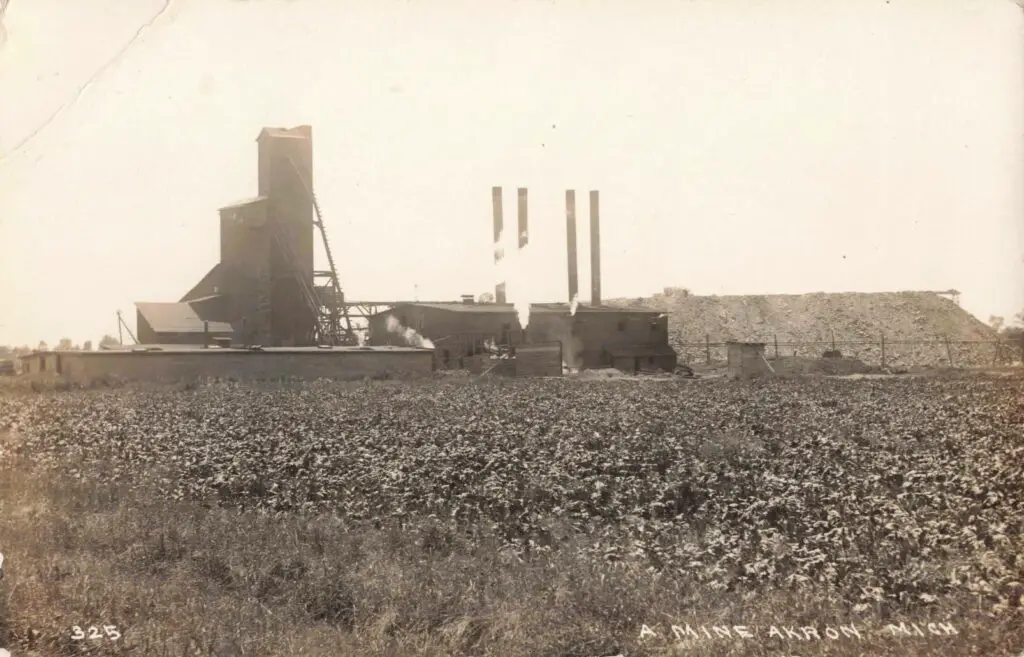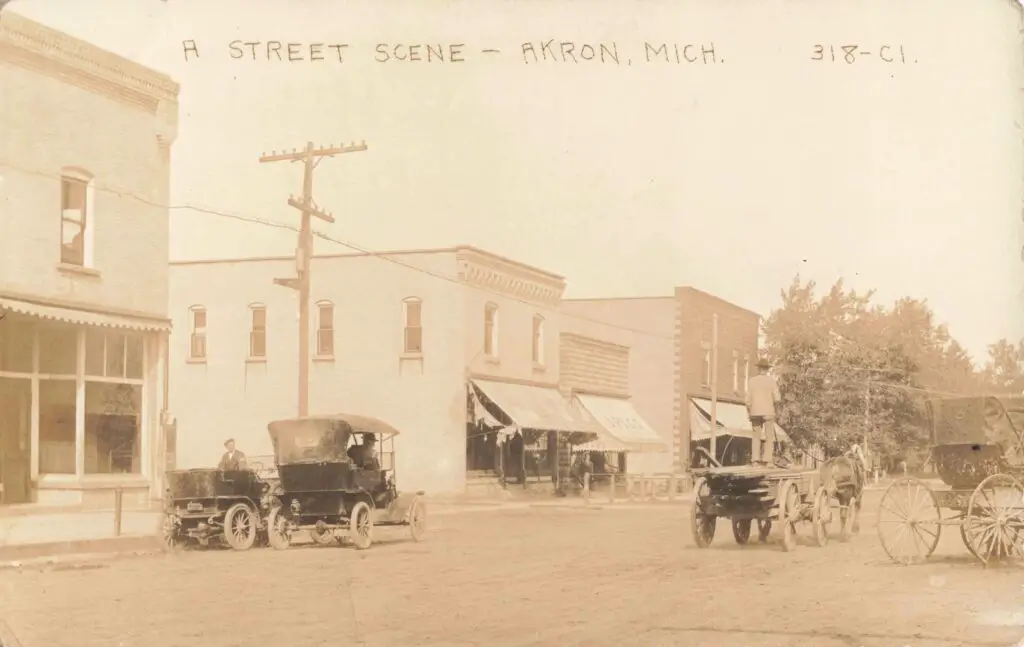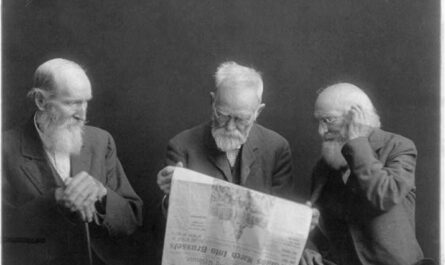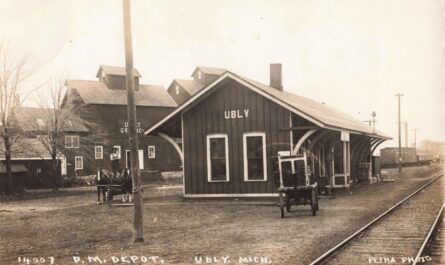Most people don’t think of Michigan as coal country. Copper in the Keweenaw, iron ore in Marquette, and gypsum in Grand Rapids are the better-known stories of extraction. Yet for a brief moment in the early 20th century, the small village of Akron in Tuscola County became a coal-mining town. Though the Akron coal mine was short-lived, it left behind an intriguing trace of Michigan’s industrial past.
Video – Tuscola County’s Coal Mine History
Akron: A Thumb Village with Big Ambitions
Akron, Michigan, sits in the state’s Thumb region, near the Saginaw Bay. Today it’s a quiet rural community of fewer than 400 people. But in 1907, Akron made headlines across the state when reports circulated of promising coal deposits just beneath the farmland.
Coal seams had long been known in scattered parts of Michigan, but the quality and thickness varied. Most attempts to work with them were small-scale and inconsistent. The Handy Brothers Coal Mining Company of Bay City believed Akron was different. The firm sunk a shaft just outside the village, reaching depths of about 225 feet. What they found was a seam of bituminous coal measuring between five and six and a half feet thick — unusually large by Michigan standards.
The Handy Brothers’ Operation At the Akron Coal Mine

The mine quickly attracted investment and infrastructure. A three-mile railroad spur was laid from Akron to connect with the Pere Marquette line, ensuring coal could be hauled to markets in Bay City and beyond. By late 1908, production had begun, with contemporary reports boasting that Akron’s coal “compared favorably with the best Ohio coal,” then fueling factories and railroads.
The mine’s surface complex included a wooden tipple and hoisting works, captured in photographs from that winter. The structures looked more like those of small Midwestern farm towns than the sprawling collieries of West Virginia or Pennsylvania, but for the Thumb, it was a striking symbol of modern industry.
Dozens of men found employment in the operation, and Akron briefly assumed the air of a boomtown. Boarding houses filled, merchants welcomed new customers, and farmers sold timber and hay to the mining company.
Michigan’s Limited Coal Future
Despite the early excitement, Akron’s coal mine and others in Tuscola County faced significant challenges. Michigan’s coal seams were limited in both geographic spread and depth. They required costly sinking and pumping, especially compared to the vast, shallow deposits of neighboring states. Transportation also undercut the Akron coal mine’s advantages: with railroads already bringing in cheap coal from Ohio and Illinois, local mines struggled to compete on price.
By the early 1920s, Akron’s mine was in decline. The equipment aged, demand shifted, and investors moved on to more profitable ventures elsewhere. By mid-century, coal mining in Michigan had all but ceased, overshadowed by the dominance of copper, iron, and imported fuels.
Life Around the Mine

While the Akron mine never grew into a sprawling industrial hub, it shaped the rhythms of local life for a generation. Oral histories recall the sound of hoisting machinery, the daily arrival of coal cars, and the economic lift the mine gave to the village. For some families, coal wages meant a steady income during otherwise lean winters.
Yet mining was dangerous and challenging work. Water seepage was a constant problem in Michigan shafts, and collapses were always a risk. Though records of specific accidents at Akron are sparse, the broader hazards of coal mining in the era — from black damp gases to cave-ins — were ever-present.
A Brief Legacy
Today, little remains of the Akron Coal Mine. The wooden structures are long gone, and the shaft has been filled or collapsed. Only photographs and scattered documents recall its existence. However, its story is essential for understanding how even small Michigan villages sought to harness underground resources during the Industrial Age.
Akron’s experience mirrored that of several other Thumb communities — including Cass City, Sebewaing, and Unionville — that attempted coal mining with varying degrees of success. In every case, the economies of scale worked against them. Still, for a brief period, coal seemed to promise prosperity, and Akron staked its hopes on that black seam.
Remembering Akron’s Industrial Past
When we look back at Akron’s coal mine, we see both ambition and limits. It reminds us that Michigan’s history is not only tied to its great timber camps, auto factories, and shipping ports, but also to smaller, fleeting enterprises like this. The Akron mine did not transform the state’s economy, but it did transform the lives of people in and around the village for a time.
More than a century later, Akron remains a farming town. But in 1908, with smoke rising from the tipple and coal cars rattling down the Pere Marquette spur, it briefly stood at the center of Michigan’s search for energy.



